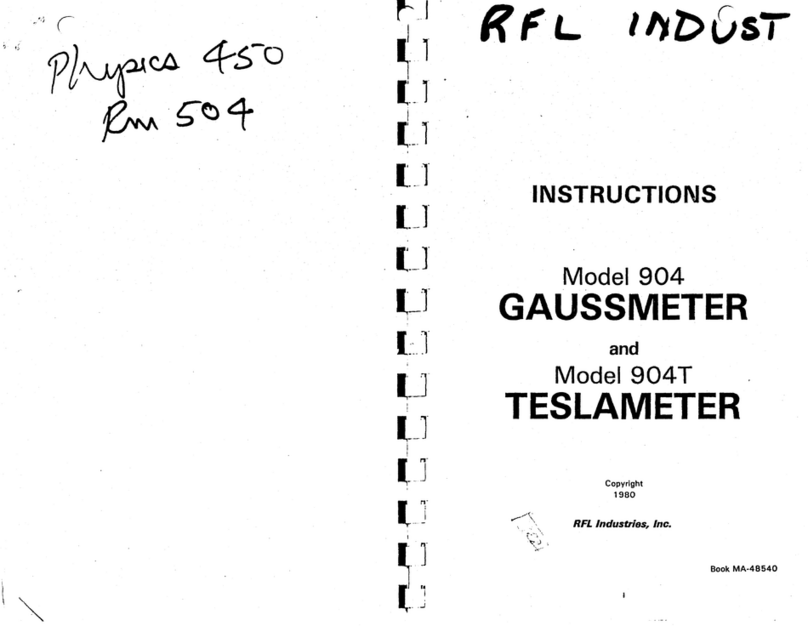
DESCRIPTION
RFL
Model 750 Series Gaussmeters are supplied
as
aModel
750A
analog version, Model
7500
digital-display instrument,
or
as
Model 750AR
or
7500R
which are rack-mount versions
of
the standard instruments.
Models 750A and
7500
are.
bench-mount instruments equipped
with
II
carrying handle, zero-Gauss chamber, and incorporating astorage
area
for
the Hall probe.
All
operational controls are located on the
front
panel.
Rear
panel connectors provide a 0
to
1.5
volt
dc emf proportional
to
the
full-scale range
of
the meter, and aseparate
output
to
enable visual display
of
the magnetic field effects on
an
auxiliary oscilloscope.
Internal calibration
is
provided in all instruments. The electronic
calibration
circuit
is
adjusted
at
the
factory
with
instrumentation having
an accuracy
of
better than
0.1
%.
Traceability
to
the National Bureau
of
Standards
is
assured
through instrumentation checked
by
NBS
or
having
basic values obtainable through standard physics technology.
Model
750A
The analog instrument
measures
de
and permanent magnet fields and
ac
fields
to
600 Hz
at
flux
density levels up
to
50,000
Gauss.
Eighteen
full-scale
ranges
are provided using a 1 - 2 - 5 scaling arrangement
with
0.1
Gauss
full-scale
as
the most sensitive range. A
5%
inch parallax
corrected taut-band meter
with
1
GO
divisions provides readout
to
tenths
of
a
scale
division. Azero center
scale
is
also provided
to
enhance operation
when
polarity
indication
is
desired.
Model
7500
The Model
7500
is
similar in appearance and operation
to
the Model
750A. A
3%
digit
seven
segment display
is
incorporated providing a
full
four
digits at full-scale range. One hundred percent overrange
is
provided
as
well
as
polarity
indication
of
the field being measured. Bipolar
circuitry
and
meter indication
simplify
operation where fields
of
alternate
polarity
are
measured. Five full-scale
ranges
of
10, 100, 1000, 10,000, and 100,000
Gauss
are incorporated
into
the Model
7500
allowing resolution
of
0.01
Gauss
on the most sensitive range. Decimal
point
location
for
the various
ranges
is
automatic through operation
of
the RANGE selector.
Operation
of
all units
is
from
115
or
230
volt,
50/60 Hz, 10 watts, line
supply. Instrument
size
is
11
%inches (29 cm) wide over handle,
6%
inches (16.5
em)
high and 10 inches (25 cm) deep. Weight
is
7pounds
(3.3
kg)
for
the Model
750A
and 8pounds (3.6 kg)
for
the Model
7500.
6




























